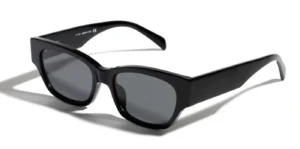Introduction
Acetate has long been revered in eyewear for its ability to be shaped into lightweight, comfortable, and stylish glasses frames. While acetate manufacturing has become highly automated, a subset of specialty factories continues handcrafting acetate frames to achieve unparalleled quality, customization, and artisanal appeal.

In this comprehensive guide, Professional sunglasses manufacturers will explore the top handmade acetate glasses frame manufacturers keeping alive rich acetating traditions through meticulous benchwork craftsmanship. You will discover the hallmarks of handmade acetate production, insider tips for identifying true handcraft, profiles of elite acetate artists globally, considerations for custom private label collaborations, and the inimitable luxury essence achieved solely through human hands.
Topics covered include:
- Origins and qualities of acetate as a glasses frame material
- Traits distinguishing hand-acetated frames
- Complex steps in the manual acetate production process
- Geographic hubs for acetate frame artisans
- Notable manufacturers pushing craft to the limits
- Hallmarks of genuine hand finishing and decoration
- Specialty techniques like laminating, engraving, and polishing
- The customization potential of bespoke handmade frames
- Cost and lead time factors for limited production runs
- Building collaborative partnerships with artisans
- Preserving handmade integrity at larger volumes
- The alluring essence and heirloom appeal of hand-acetating
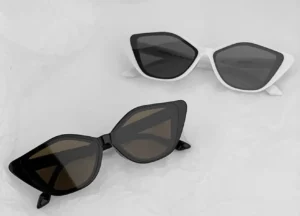
By the end, you will have an expansive view of the possibilities of handmade acetate eyewear and the living history of this labor-intensive craft. Let’s delve into the fascinating world of hand acetating!
Chapter 1 – The Origins and Qualities of Acetate as Frame Material
Acetate became popular for its versatility:
- Cellulose Base – Derived from renewable wood pulp sources like cotton and tree cellulose
- Early History – Patented as celluloid in 1865 then evolved into acetate in 1927
- Lightweight – Low density between 1.15-1.35 g/cm3 for comfort during wear
- Adjustable – Pliable allowing bending and flexing for custom fits
- Color Integrated – Tones permeate material versus surface coatings
- Customizable – Wide range of color, pattern, and transparency effects
- Refinement – Associated with high fashion versus utilitarian metals
- Limitations – Not as inherently durable as metal alloys
With origins in the early 20th century, acetate’s aesthetic qualities made it a preferred glasses frame material still ideal for hand manufacturing.
Chapter 2 – Traits Distinguishing Hand-Acetated Frames
Indicators of handcrafting include:
- Irregularities – Slight variances part-to-part reflecting human hands.
- Tool Marks – Faint ripples and surface signatures of manual tools.
- Hand Finishing – Evidence of manually sanded and polished bevel and edge treatments.
- Decoration – Built-in color swirls, glitter, or layering is only achievable manually.
- Custom Shaping – Bespoke curvatures and custom bridge/temple shaping.
- Limited Scale – Made in small atelier workshop settings, not mass production.
- Heritage Techniques – Craft passed down over generations through apprenticeship.
- Artisan Stories – Brand narratives boasting decades of hand craftsmanship.
- Tiny Imperfections – Occasional slight blemishes suggesting human execution.
Look closely and subtle hints reveal hand craftsmanship versus machine manufacturing.
Chapter 3 – Complex Steps in the Manual Acetate Production Process
Artisanal hand-acetate entails meticulous iterative steps:
- Material Preparation – Heating and hand-rolling sheet acetate until pliable.
- Cutting – Manually cutting geometric shapes from warmed acetate sheets.
- Grinding – Filing and emery paper to taper and bevel rough cut forms.
- Polishing – Buffing finely sanded shapes to smooth high gloss finishes.
- Decorating – Applying special layered color effects.
- Forming – Using heat and tools to bend into 3D curvature.
- Cooling – Allowing acetate to harden fully in the desired shape.
- Assembling – Joining multiple parts like fronts, temples, and hinges.
- Inspection – Scrutinizing every frame for defects before shipping.
Dedicated artisans invest hours across this intricate sequence to create each exceptional handmade frame.
Chapter 4 – Geographic Hubs For Acetate Frame Craft
Prominent clusters of acetate artisans include:
Tokyo, Japan
Birthplace of brands like Furuki, Masahiro, and Matsumoto devoted to handcrafting only the most exquisite acetate frames.
Cadore, Italy
Italian spectacle heritage concentrated in this Belluno valley dating to the 1700s. Home to brands like Lozza and De Rigo.
Portland, Oregon
Hip Pacific Northwest mecca attracts new bespoke studios like Ernest Supplies and Blublox.
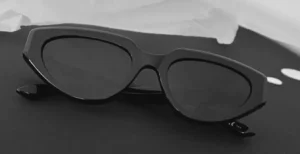
Paris, France
French savoir-faire artistry expressed through eyewear ateliers creating works of wearable art.
Scandinavia
Optical craftsmanship concentration in Denmark, Sweden, and Finland focused on clean minimalist acetates.
While global, pockets of acetate artisans thrive where eyewear history concentrates expertise.
Chapter 5 – Notable Hand Acetate Frame Artisans
Makers spanning decades include:
J.F. Rey (Paris est. 1946)
Handcrafting avant-garde acetate styles for generations. Pioneered laminating colors within acetate.
Masunaga (Tokyo est. 1905)
Prominent family studio passing down engraving and polishing mastery for over a century.
Götti (Switzerland est.1923)
Swiss precision is expressed through sleek hand-acetated fashion frames and small batch runs.
Kirk & Kirk (USA est. 1989)
Massachusetts studio focused on handmade custom designs using old-world techniques.
Baroque Bespoke (Brooklyn est. 2015)
Contemporary made-to-order acetate frames are hand-fabricated from start to finish.
The expertise amassed over long histories leaves these studios in a class by themselves pushing hand acetating possibilities.
Chapter 6 – Discerning Genuine Hand Finishing and Decoration
Subtleties in technique separate authentic hand work:
Polishing – Wheel polishing produces consistency. True hand polishing has slight variances.
Laminating – Hand layering color inside acetate creates minor wrinkles and proof of working by hand.
Engraving – Faint tool chatter marks and slight spacing irregularities indicate hand engraving.
Edge Grinding – Machine beveling is clean and uniform versus handworked edges.
Fittings – Imperfect machined endpiece drilling is a handcrafted fingerprint.
Decoration – Minor debris remnants around handset decoration points toward bench work.
Hands introduce minute details machines can’t replicate.
Chapter 7 – Specialty Techniques of Master Acetate Artisans
Masters differentiate through proprietary methods:
Lamination – Layering colors inside acetate for unique patterns requires great skill.
Natural Materials – Blending wood, seeds, and flower petals create depth.
Obscura – Blackened acetate maintains translucent shadows.
Opalina – Blown glass craft infuses radiant pearlescent sheens.
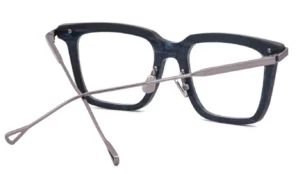
Engraving – Intricate designs delicately hand-cut into each frame.
Glitter – Particles or foil embedded to catch light.
Gold Flake – 24k gold bullion rolled into paper for lavish inlays.
Hand painting – Miniature designs for geometric or natural motifs.
Combining technologies like 3D printing with hand finishing pushes boundaries.
Chapter 8 – The Customization Potential of Bespoke Handmade Frames
Hand methods enable made-to-order personalization:
Monograms – Initials decoratively engraved into temples or inner brows.
Fit – Frames shaped to match individual facial contours and ergonomics.
Tinting – Graduated lens colors or patterns within pieces.
Co-design – Collaborating with opticians on styling and technical specs.
Material – Choosing from an array of acetates or natural material mixes.
Measurements – Frames precision sized to custom dimensions.
Profiles – Unique bevels, cutouts, and edging.
Dedication – Artisan signatures inside pieces upon request.
For individual self-expression, handmade glasses deliver an intimacy machine struggle to match.
Chapter 9 – Cost and Lead Time Factors for Bespoke Acetate Eyewear
Pricing reflects intensive production:
Materials – Exotic acetates sourced globally in small supply accrue premiums.
Labor – Highly skilled artisans demand appropriately higher wages.
Low Volume – Set up costs amortized over fewer orders increases pricing.
Rejects – Handmade inconsistencies mean more scrapped attempts.
Overhead – Real estate and raw material carrying costs factor in.
Development – Multiple iterations and design time add expenses.

While automated acetate production costs continue falling, bespoke pricing correctly recognizes sheer human effort.
Lead Times – Managing expectations for clients:
Sourcing – 2-4 weeks for specialty acetates.
Design – 2-3 weeks for ideation and technical development.
Production – 4-6 weeks depending on customization complexity.
Shipping – 1 week for domestic, 2-3 weeks internationally.
Total: 9-16 weeks coordinating details.
Greatness cannot be rushed. Communicate timelines clearly upfront.
Chapter 10 – Building Collaborative Partnerships With Acetate Artisans
Mutual understanding enables success:
Visit Studios – Immerse in their environment and techniques. Have a candid discussion.
Share Inspiration – Provide creative direction to align aesthetics.
Technical Dialogue – Iterate on engineering, material, and decoration feasibility.
Supply Chain Coordination – Ensure component availability fits the schedule.
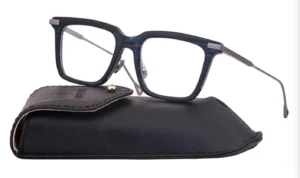
Payment Terms – Offer acceptable deposit, milestone, and balance structure.
Quality Reviews – Inspect and provide prompt feedback on samples.
Open Communication – Check in regularly on progress and discuss issues.
Patience – Allow the masters to perfect their intricate craft.
By valuing collaboration, spectacular handmade eyewear emerges.
Chapter 11 – Preserving Handmade Integrity at Larger Volumes
Scaling artisanal production sustainably means:
Strategic Growth – Expand capacity in modest increments.
Pre-Production Samples – Have artisans validate volume feasibility with small batch trials.
Process Documentation – Formally outline optimal methods to ensure repeatability.

Master Oversight – Keep the original craftspeople training and evaluating newer apprentices.
Jig Improvement – Invest in tooling aids to ease steps without sacrificing quality.
Incremental Automation – Only assist human hands minimally with simple machines.
Decentralizing – Add satellite workshops near apprentice talent pools.
While still limited ultimately, hand producers can moderately scale without compromising heritage techniques.
Chapter 12 – The Sensory Allure and Heirloom Value of Handcrafted Acetate Frames
Buying eyewear made by hand offers intangible benefits:
Story – Purchasing craftsmanship traditions convey richer meaning.
Exclusivity – Low production quantities increase perceived value.
Distinction – Handmade irregularities exhibit personality versus factory uniformity.
Tactility – The weight, texture, and flex feel sense quality.
Emotion – Breaking from disposable culture elicits satisfaction.
Legacy – Frames become treasured artifacts and family heirlooms.
Philosophy – Handmade ethos reflects conscientious consumption.
The luxury extends beyond the physical to profoundly fulfilling deeper human desires for connection, heritage, and connoisseurship.
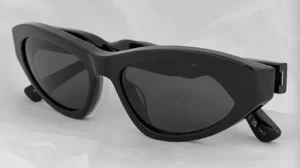
Conclusion
While seemingly an antiquated relic in today’s highly automated manufacturing reality, the technique of hand-acetating eyewear frames persists because of the irreplaceable beauty of the human hand’s imprint. Mass production will continually fail emulating the subtle irregularities that lend bespoke handmade pieces their soul. As optical material and fabrication technology continue rapidly advancing, the distinct appeal of artisan craft endures, coveted by connoisseurs worldwide. For discerning clients seeking the pinnacle of quality, customization, and provenance from a bygone era, handmade acetate eyewear delivers an experienced technology alone cannot replicate.
